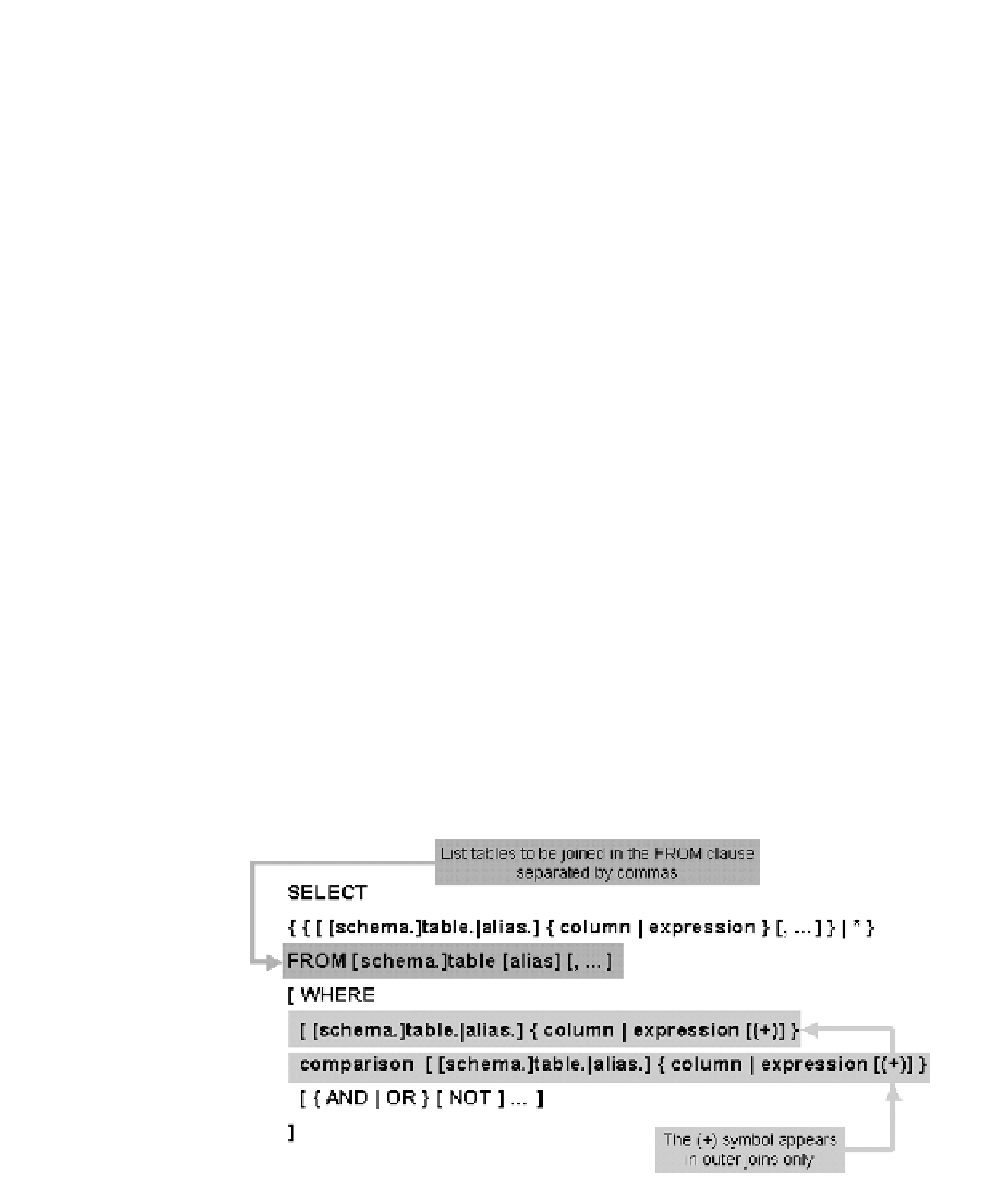Database Reference
In-Depth Information
full outer join, cannot be done in Oracle's proprietary format. Thus
the ANSI format must be used at least to describe full outer joins.
Let's begin by looking at the two different join formats in detail.
10.1
Join Formats
As already stated, the two join formats available are the Oracle proprietary
format and the ANSI standard join format.
10.1.1
Oracle's Proprietary Format
Oracle's proprietary join format may eventually be superseded by the
ANSI format JOIN clause syntax. At present, this is not the case. In the
Oracle proprietary format, join syntax is part of the WHERE clause.
Outer joins are handled by using an outer join operator
denoted by a plus
sign enclosed in parentheses, (+). The outer join operator is placed after a
column name reference in the WHERE clause on all columns belonging
to the table on the outer side of the join, the side deficient in information
or rows. Figure 10.1 shows the basic syntax of the SELECT statement,
including the WHERE clause and Oracle proprietary format join syntax
using the (+) operator.
10.1.2
ANSI Format
The ANSI format JOIN clause has been included in Oracle as optional
when joining tables. Figure 10.2 shows the syntax of the ANSI JOIN
clause. The following points should be noted:
Figure 10.1
Oracle's Proprietary
Join Syntax Using
the (+) Operator.



















